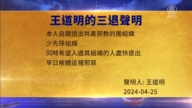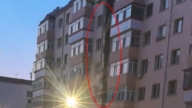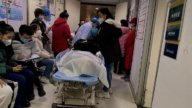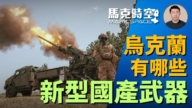【新唐人2014年03月19日讯】日前,中共中央、国务院印发了有关2014年至2020年的《国家新型城镇化规划》,并通知各地区部门推进所谓城镇化的要求和目标。而专家表示,中国地方政府不断圈地,把民众的土地给剥夺了,这些失地农民却进不了城,也回不了乡,处境悲惨。另有专家认为,中国的城镇化发展需要转型,农业转移人口落户城镇,不只是一纸户口变更那么简单,保障对接还存在体制机制上的障碍。
中国自1990年代以来,随着工业化、城镇化的加快,大量农村土地被征收、占用、开发,不仅影响农村发展,而且威胁粮食安全,同时,失地农民还面临“种地无田、就业无岗、低保无分”的困境。
中共当局日前提出《新型城镇化规划》,计划从今年到2020年的6年期间,将“常住人口城镇化率达到60%左右,户籍人口城镇化率达到45%左右,户籍人口城镇化率与常住人口城镇化率差距缩小2百分点左右。”而且还要“努力实现1亿左右农业转移人口和其他常住人口在城镇落户”等。
大陆金融分析师任中道﹕“中共政府的户籍政策,在上世纪50年代,强制的分成农村人口和城市人口。刚开始的时候,农村人只能生活在农村,至于城市的居民的福利待遇,相差很多。日前中共开始新型的城镇化的这样的规划,说是要6年内解决1亿人进城,那么,首先得保证现在民众的相关的福利待遇,医疗、教育、养老等等。”
目前中国农民的失地问题,表现在三个方面,一是﹕土地农转非速度太快,土地征占规模过大,失地农民群体越来越多﹔二是﹕对失地农民补偿太低,不足以解决他们的长远生计﹔三是﹕失地农民的社会保障、及再就业困难。
当前中国的城市退休人员的平均养老金,是新农保的30多倍,显然,较低的新农保养老金,难以满足老年人的基本生活需求。
而中国的城镇化率,近年来每年增长1.3%,每年相应增加的城镇人口约有1800万人,但每年新增就业岗位不到1200万个。
山东临沂农民工卢女士﹕“我觉得大部分老百姓不积极想进城,因为那个进城成本他们都感觉到太高了,当然他们负担不起。你年轻的还可以,年轻人像进工厂、去打工、作工,但是年纪大的人比较悲惨,因为他们的土地也没了,他有土地的话,他最起码能种出粮食来。”
大陆《21世纪网》报导,农业人口转移落户城镇的人均公共成本,以安徽省为例,在10万元左右﹔个人成本不含购房成本,超过1万5000元。而安徽省城、乡居民的“社保”差距,在5:1以上。
任中道﹕“到现在为止,中共完成的只是伪城镇化。即便把土地征用了、开发了、建设了,但是相应的那些人,他处在一个夹心层的状态。什么叫夹心层啊﹖有很多农村的人,4、50岁了,所受的教育、他社会的经验,甚至体力都无法在城市工作,他就是留不在城,回不了乡,留在城里他可能没办法养老,他的医疗、各种保障都没有,也没有自己的住所。”
有专家提出,中国的城镇化发展需要转型。大陆中科院院士陆大道向《21世纪网》表示,城镇就业是决定城镇化速度、城镇规模的主要支撑条件。近年来,中国城镇化速度较快,产业支撑无法跟上,城镇就业岗位的增加赶不上城镇新增人口的增长。
任中道﹕“现在大家也都看到了,现在中国的经济情况不怎么好,因此,这么多人进城,他的工作经验,包括福利保障等等,它(中共)如果不解决的话,它的城镇化实际上只是纸上谈兵。”
卢女士﹕“它(中共)不怕这1亿多农民变成城市的人的话,其实按照中国的现状,就是耕地被大量的占用,就是因为这个土地越来越少,老百姓没有地可种,没办法,才把这些人变成城市的人。”
当前,中国大陆因征地问题引发的群众抗争越来越烈,而如何让那些处在夹心层的失地农民安度晚年,同样也令人担心。
采访/陈汉 编辑/周平 后制/李勇
The New Urbanization Plan: Where Is Social Security For Farmers?
Recently, the CCP Central Committee and the State Council
issued the new national urbanization plan, 2014 through 2020.
Local authorities have been notified that they are to promote
the so-called urbanization requirements and objectives.
Experts say the local governments have deprived people
of land.
This movement leads landless farmers into a tragic situation
—they can neither enter the city, nor return to the farm.
Other experts believe that China’s urbanization development
needs restructuration, as transferring farmers into cities
is not as easy as transferring a household registration.
There are institutional barriers for protecting
the farmers’ social security.
With the acceleration of industrialization and urbanization
in China since the 1990s, a large amount of rural land
was occupied for economic development,
which threatens rural development and food security.
At the same time, the landless farmers also face difficulties,
such as no land, no employment and no social insurance.
According to the new urbanization plan, the resident
population urbanization rate will reach 60 percent,
the household population urbanization rate will reach
roughly 45 percent, and the gap between the household
urbanization rate and the population urbanization rate
will reduce by 2 percent.
All these targets will be accomplished
in the following 6 years.
Besides, about 100 million farmers will be settled
in the town.
Financial Analyst Ren Zhongdao (China): “According
to the CCP household registration policy in the 1950s,
the Chinese people have been forced to divide into
two groups—the rural population and urban population.
At the beginning, the rural people are required
to live in the rural areas.
As for the benefits, there are a lot of differences
with the residents in the city.
The new urbanization plan calls for settling
100 million farmers in the town.
First of all, the authorities have to ensure welfare for
rural dwellers, including medical, education, pension, etc."
At present, the landless issues lead to three problems: first,
the land transfer speed is too fast and the land requisition
is too big –there are more and more groups of landless farmers;
Second, the compensation for the landless farmers
is too low, not enough to solve their long-term livelihood.
The third is the social security and re-employment
issues for the landless farmers.
According to the new urbanization plan, the current average
pension of urban retirees is 30 times more than that of rural retirees.
Obviously, it is difficult to meet the basic needs
of the elderly living in rural areas.
The urbanization rate in China increased by 1.3 percent
per year recently.
The corresponding increase in the urban population
is about 18 million per year, but the annual increase
of jobs is less than 12 million.
Ms. Lu, a migrant worker in Linyi, Shandong: “I think
most people do not want to settle in the city due
to the high living cost.
Of course they cannot afford it.
It could be okay for young people as they could find jobs
in the factory.
But for the older people, it is miserable –
their land is missing.
With the land, they could grow food at least."
The 21st Century Network reported that the per capita
public costs for transferring the rural population
into the town is about 100,000 yuan in Anhui province.
The personal cost (excluding housing) is more than
15,000 yuan.
The social security gap between rural retirees and urban
retirees is more than 5:1 in the capital of Anhui rural.
Ren Zhongdao: “Until now, what the CCP completed
is just a pseudo-urbanization.
Even the expropriated land was used for economic
development, but those related people are moved
into a sandwich layer.
What does ‘sandwich layer’ mean?
For many 40 to 50 year-old people living in rural areas,
they cannot work in the city according to their
educational or social status and even their
health condition.
They can’t live in the city, nor return to the rural areas.
There is no medical insurance, pension or other
social security, including housing."
Some experts suggest that China’s urbanization
development needs restructuration.
Lu Dadao, the academician of Chinese Academy
of science told the 21st Century Network that
urban employment can determine the speed
of urbanization.
It is the primary condition for sustainment
of the urban-scale.
In recent years, China’s urbanization rate is too fast.
However, the industry support cannot keep up,
so as to the jobs increase rate in urban areas.
Ren Zhongdao: “Now we find that China’s
economic situation is not very good.
Therefore, if the social security for the farmers cannot
be solved, then the urbanization will only be talk."
Ms. Lu: “The CCP is not afraid of transferring these more
than 100 million farmers into the city.
According to China’s current situation, a lot of arable lands
have been occupied.
The land is less and less – there is no land for people
to cultivate.
Therefore, the CCP has to transfer these people into
the cities."
Currently, the struggle caused by land acquisition problems
is increasing.
Those in the sandwich layer –the landless farmers—deserve
to be shown concern.
Interview/Chen Han Edit/Zhou Ping Post-Production/Li Yong





























